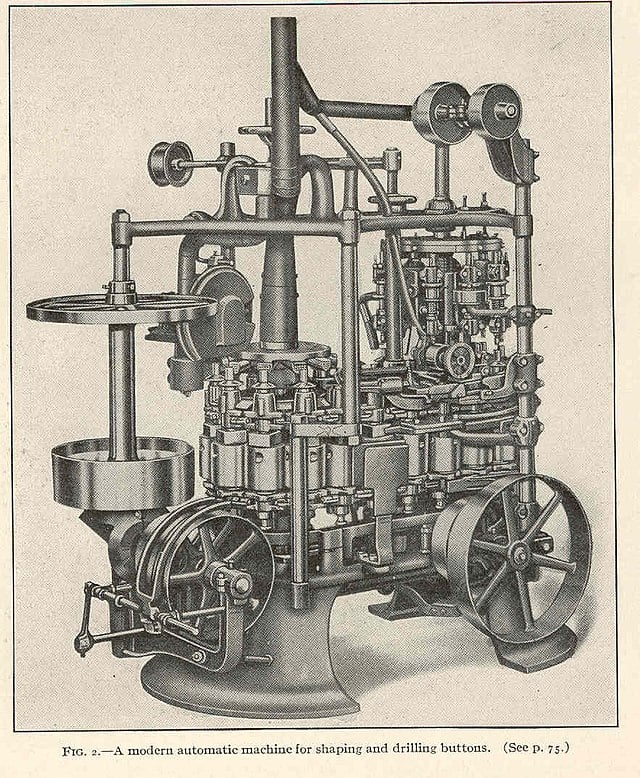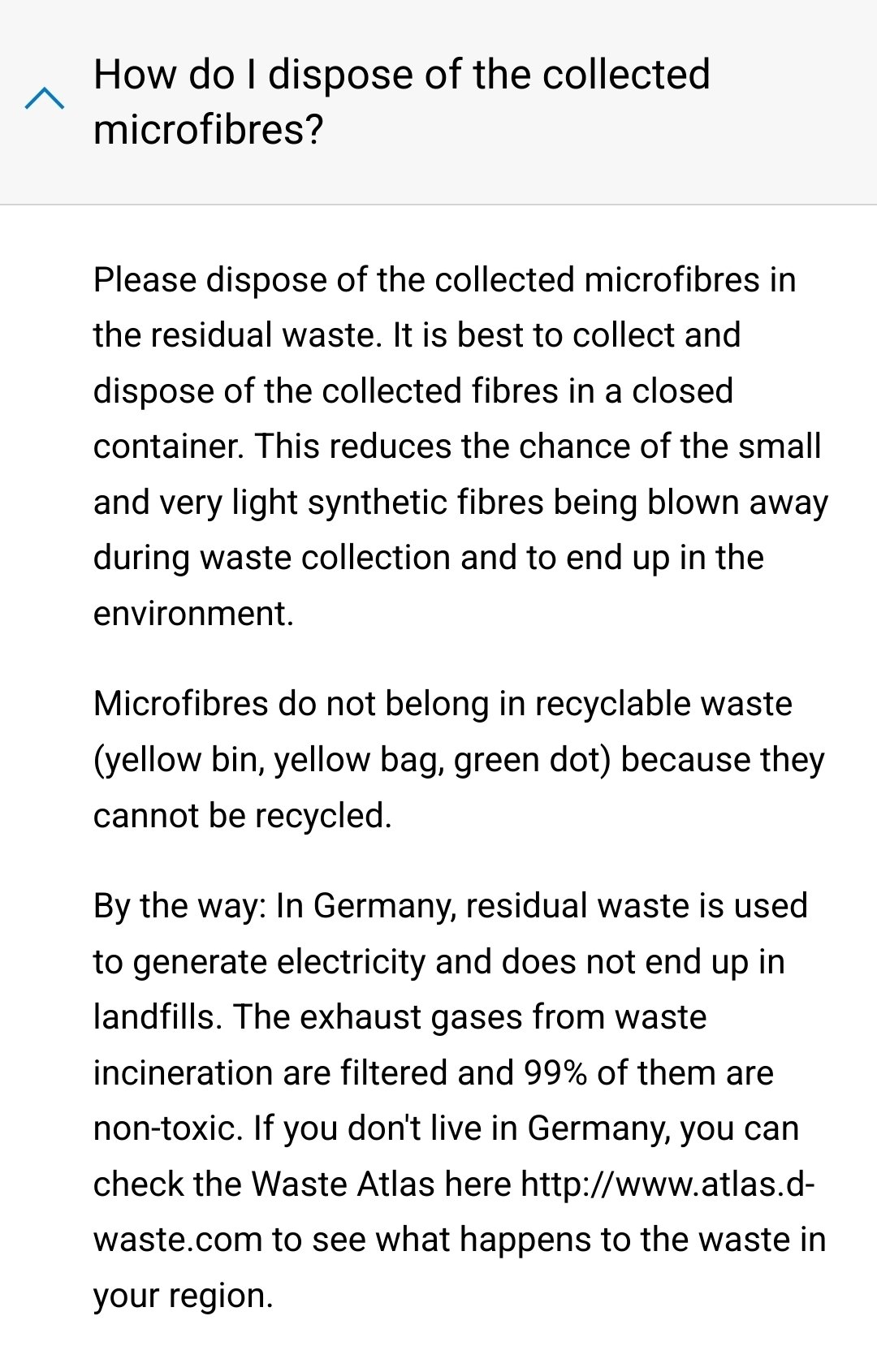Summary
A new study from Spain’s Autonomous University of Barcelona reveals that tea bags made from nylon, polypropylene, and cellulose release billions of micro- and nanoplastic particles when steeped in boiling water.
These particles, which can enter human intestinal cells, may pose health risks, potentially affecting the digestive, respiratory, endocrine, and immune systems.
Researchers urge regulatory action to mitigate plastic contamination in food packaging.
Consumers are advised to use loose-leaf tea with stainless steel infusers or biodegradable tea bags to minimize exposure.
What isn’t releasing billions of microplastic particles? We’re fucked.
When someone is getting laid and he drops a load in her, he’s probably injecting microplastics.
Just a thought for next time you are in bed with someone.
And if you don’t- the condom? Also releasing microplastics. That glass of water you have afterwards because you’re all hot and sweaty and thirsty? Also full of microplastics.
As long as you’re using latex/nitrile condoms you should be good as latex and nitrile aren’t plastics. Some of the alternatives for people with latex allergies can have plastic in them though.
Good to know, thanks for sharing that article!
gg plastic won
“This stuff is awesome! We can make it into any shape we want, it’s cheap, and amazingly durable! MAKE ALL THE THINGS PLASTIC!”
We never stood a chance.
When we had no clue, I mean yeah, sucks, but live and learn. But the fact that all of this evidence has emerged and not much has changed is what’s enraging.
The manufacturers had a clue long before we did. Just like leaded gasoline. And fossil fuels in general. And cigarettes. And so on. Nothing changes until governments step in, which sends the “captains of industry” into tantrums like the spoiled pissbabies they are.
That is even more enraging.
cigarettes
Speaking of, cigarette butts / discarded filters are a major source of microplastic pollution.
Smell that sheepskin condom?
You just inhaled plastics.
How dare you comment. You just released microplastics! Wait, so am I!!!
Bro, I prescreen each injection for microplastics before sowing the oats. It’s just common courtesy. Don’t ask me about my reload process, if you have to ask you can’t afford it.
Is this the one where you take a turkey baster and insert it?
Totally slightly different method.
remember, microplastics are formed in the balls
And they become tumors if you don’t regularly get them loads out…
My tinfoil hat theory is that we’re going to find out that toothbrushes are a major source of them
Oh they are.
Vegans hate this one trick to avoid microplastics from toothbrushes; horsehair toothbrush.
Also, you guys rinse your mouths, right?
Rinse your mouth? No thank you, I swallow it all! I paid for that toothpaste and I’m getting my money’s worth.
Not even micro. There is a nonzero chance you’ve ingested the bristles at some point
I wonder if I am. Do I have enough in me that I’m emitting them?
Yes.
This warning only applies to the pyramid tea bags and not the paper sachet.

It did list cellulose bags as one source, however I don’t quite understand how. Additive to strengthen the material?
Plastic coating to make the bag more resistant to heat.
Oh my god. I think I’ll just go back to my teapot.
Cellulose isn’t plastic though, it’s the sugar that makes up plant cell walls, like wood. Cotton fibers are 90% cellulose https://en.wikipedia.org/wiki/Cellulose
I’m confused why they included cellulose without clarifying that it’s not a petrochemical, unless cellulose micro and nano particles are also an issue now. Maybe I should read the original study…
What I meant to say is that the cellulose is coated with plastic. I learned this from another post in the same thread.
Could also be to keep them white? I used to see teabags last century (and health food shop teabags nowadays) yellowing similarly but commercial Twinings tea bags these days remain white - could be a chemical impregnated into the paper but that seems likely to leach into the tea.
They close the bags with a dot of plastic based glue so it doesn’t open
The square with crimped edges bags have plastic in the paper so that the edges will fuse closed.
Phew! Thought I was giga fucked there for a minute
Consumers are advised to …
Consumers are advised to check whether tea bags in their region are even made of these materials.
Edit: Also, “billions”? The cookie warning is borked on the foodandwine.com article so I can’t read it but: https://www.dpa-international.com/trends-and-features/urn:newsml:dpa.com:20090101:250109-99-540705/ “Tea bags releasing ‘millions’ of microplastics into tea, study shows” - where does that difference come from?
deleted by creator
Cellulose is just plant fiber. You’re literally boiling tea leaves which are themselves made of plant fiber! This is silly.
This is not silly; the study is not to determine if these are harmful or not, just what’s released from boiling a teabag.
I’m not knowledgeable in this area of research nor am I about to spend an hour going over the paper to write this comment, but collecting data on seemingly mundane things is important too.
It’s likely that the cellulose is treated or coated with something that breaks down during steeping.
I wanted to look this up with my brand of tea, and they do line their cellulose bags with plastic.
From https://tetley.ca/pages/faq
100% of our portfolio is in paper tissue format. Currently the majority of our tea bags are made from natural plant fibres with a thin inner layer of a plastic material called PP which enables the bags to be heat sealed to keep the tea firmly in the bag (0.03 g per bag). Recently, we transitioned our Orange Pekoe range to plant-based tea bags which are made with PLA tissue. PLA is a bioplastic derived from plant sources. Using plant-based tea bags across all our products is an important part of our sustainability strategy and commitment to reduce the use of non-renewable plastics in our business.
Ugh. I stayed far away from those David’s Tea completely plastic bags but was really hoping that cellulose bags would be fine. Turns our they just have to put plastic in everything. I don’t want plastic anywhere near hot water that I’m consuming.
I did the same with mine – prepared for the worst, but pleasantly surprised:
WHAT IS THE FILTER PAPER MADE OF THAT YOU USE IN YOUR TEA BAGS?
The filter paper used for Yamamotoyama tea bags is made from 100% cellulose fibers (wood). Test results conclude that chlorine dioxide is not present in our tea bag filter paper. The filter paper is not coated with the compound epichlorohydrin, and does not contain any free epichlorohydrin. Yamamotoyama tea bag filter paper is machine folded and pressed, therefore no glue is needed or used. Our teabags are completely compostable.
Heh PLA. While it is made from starch it’s also not (really) biodegradable, it just is in a very controlled environment.
And PLA still is plastic.
PLA put the PLA in PLAstic
A lot of paper food storage products are coated with pfas. I’m not sure if tea bags are but it’s a possibility.
Seems more specifically it comes down to the brand rather than the region, though the article linked to by this one appears to be from 2021, so there’s a possibility things have changed
How many micro plastics are released when I cry?
Removed by mod
I sell the tears on Etsy, it’s the only way I can support my Nestle milk addiction
Removed by mod
Take this down rn and stop spreading my $1000 idea. My lawyers will be in touch
Removed by mod
Context for anyone who didn’t get the joke.
deleted by creator
No it doesn’t. This study is unscientific garbage and should be retracted.
Their “simulation” of making tea involved 300 teabags boiled in 600ml of water at 95 C while being stirred at 750rpm for an unspecified amount of time. They then took counts using undiluted samples of that liquid.
It isn’t clear why they chose such an absurd methodology, but it is absolutely spurious to draw conclusions from this about teabags used under normal conditions.
I’ve worked in a lab before. You would do it this way for a bunch of reasons.
First it’s more reliable to measure something if there’s a lot than a little. The effects of your measurement uncertainties and your error professional goes down. So better to measure 300 teabags than just 1 if you can find out the same thing from doing it that way.
As others have said, 95 deg C is hot, but it is well short of a boil.
The magnetic stir bar doesn’t blend the water, it just moves it around into a swirl, even at 750 rpm because it’s small.
If the ideal study would be to steep 1000 teabags in teacups with just-boiled water and measure the micro plastics to see how much is released on average, I can see why they did it this way instead when their focus was on what type of plastic is released vs exactly how much. I’m not sure the food and wine journalist did a great job walking the reader through this though.
So have I, and I understand why they would have chosen this approach. My issue isn’t their bench technique per se, it’s in their calling equivalence to tea brewing at home and articulating conclusions based on that.
Your objection to my describing it as “blending” is fair. However, it would absolutely not be plain swirling. With such a low ratio of liquid to teabags the physical agitation will be quite significant. Most people do not have multiple teabags in their teapot all colliding with and abrading each other while steeping.
However, the biggest cause for retraction is their failure to report accurate volumetric ratios. They used 2ml water per teabag and then reported their findings as particles/ml. It should be immediately obvious that this cannot be equated to the particles/ml that would have been derived from using 350ml per teabag, and yet they never make that conversion. I’m not going to speculate as to whether this was a result of intent to mislead or a simple mistake, but it utterly obliterates their talking point of “billions of particles”.
Yeah that all makes a lot of sense!
So can I still have my tea or what? I’m inclined to trusting you over some barcelonians
Yeah, just don’t put your teabag in a blender.
Gotchya
“got ya” or “gotcha” - make up your mind :D Although “got it” would be better here. From my non-native speaker understanding, “got ya” is more like “I got what you are saying”, whereas “gotcha” is more commonly used as “I got you there” - as in “I played a prank/practical joke on you and you fell for it”.
But this might just be something that varies with regional preference, or even from speaker group to speaker group.
You might be overthinkya 😅
You might not be enough grammar OCDya :p
Just go with loose leaf, if you like tea you’ll be doing yourself a favor anyways because it’s much better tea.
You’re so right. Azores (a part of Portugal) produces some great tea. Love the green variety
Just be sure to brew it at the right temperature. I ruined green tea for years until someone pointed out I was doing it wrong by using boiling water. I never realized you’re supposed to brew it at or under 160F
The green variety you shouldn’t brew as hot Just a broil (is that the word?) And also leave it longer in the “stew”
It is not the word. Broiling is a cooking technique of using very high direct radiant heat (i.e. cooking below the heat source). In England and Europe it’s often called “grilling”.
Sorry, late reply. Not a native speaker, and although I know a bit of english, I struggle with some culinary terms. I thought broil was when you heat water just below boiling point, like 80°C instead of 100°. What’s the term for that? It’s more like poaching 😅
Username checks out
.
I mean nothing about the methodology is even close to representing normal tea brewing behavior.
For starters, a typical cup of tea is around 300-350ml, not 2ml and certainly not 1, so the low end is already down to 23,371 particles even before accounting for the brewing technique.
Secondly, nobody holds their tea at an active boil while stirring it at 750 rpm. That’s virtually blending it. There isn’t a meaningful way to compare that to typical tea brewing behavior but I wouldn’t be surprised to learn that it produced 10,000x more particles.
.
I think you might have skimmed over the methods, but think what the OP was trying to say is:
Concentration: 300 tea bags / 600mL = 1 teabag per 2mL (175 tea bags in one 350mL cup of tea, doesnt appear typical?)
Mixing: 750rpm × [1m/60s] = 12.5 rotations a sec (Awfully fast to be stirring tea, constantly)
Incubation time: Not specified. (They could have left boiling overnight?)
There seems to be many points about the methodology that raise eyebrows. Maybe it’s ok if you want to use this method to purify particles for structural analysis or test toxicity on cells, but it doesn’t seem fair to present this as “release of micro/nanoplastics (MNPLs) from polymer-based teabags into the aqueous phase during typical usage”, as the amounts seem exaggerated.
.
Yeah, if you increase concentration until it’s visible you will get high concentration solution. By the same principle water is a deadly poison because scientists forse fed a bunch of rats liters of water until they died.
Do we have a standard for how long people keep their teabags in hot water?
'bout four minutes should be enough. Otherwise it just turns bitter. A few hours? 🤢
They report their findings as particles/ml, not particles/teabag. It should be obvious to you, as a scientist, that the particles/ml evolved given 1 teabag in 350ml of water will be massively different from the particles evolved with 1 teabag per 2ml of water.
.
I’m not totally sure what you mean by “get out more or less of the dissolved particles”, but I think I understand where your confusion lies. You keep referring to quantities, i.e. mass or particle counts. Their data is reporting these things as concentrations.
It should be obvious to you that 7.14g of salt dissolved in 2ml of water will produce a highly concentrated solution (saturated, in fact), whereas the same 7.14g dissolved in 350ml of water will produce a dilute solution. The concentration of the first one is 3.57g/ml, but the concentration of the second is 0.0204g/ml.
If somebody then turns around and says that 7.14g of salt dissolved in a mug of water will produce a concentration of 3.57g/ml, it should be readily apparent that they are incorrect. That is in effect what the authors are saying by reporting their results as particles/ml and then saying that those numbers are representative of what you might expect when brewing tea under normal conditions.
Does that all make sense?
.
“I WANT A GOD DAMN LITER OF
COLATEA!”-British Super Troopers movie maybe?
You can’t draw any real world conclusions from this methodology.
Apples are safe to eat even though the seeds contain arsenic. Take a bunch of seeds and put them in a blender and test it. That test will show them being toxic.
I would like to see a methodology that is closer to real world use. No way to know if it’s a real problem.
Eat the seeds. Your tolerance is going to spite your enemies.
Either way, loose leaf is just better.
Has anyone checked how much particles I produce when I wash my fleece jacket.
Get yourself a Guppy friend 🙂
Certainly not an expert in the field here, but I’m not sure there’s much environmental benefit from laundry bags of that sort, given the collected microplastics optimistically end up - Germany excluded - collated in your local landfill.
Guppyfriend even recommends sealing them in a container for disposal to ensure they don’t blow around during waste collection and transport. This assumes of course that you can successfully transfer microplastic fibres from a large bag into a small container without spillage, but that’s a matter separate from my conjecture.
While I don’t think any particular company that makes similar bags is purposefully guilty of this, the marketing strategy used to promote these as environmentally responsible products just smells like greenwashing to me.
The ones I’ve had are also made of synthetic materials, and so eventually break down and begin releasing their own fibres.
Frankly, the true environmental benefit I see is something I’ve never seen advertised: I can wash groups clothes I want kept from intermingling in the same load and therefore run the machine half as often.
I’m in Denmark, where we burn our non-recyclabes, so I knowit won’t end up in a landfill. Let’s burn them planet instead, lol.
So here’s one (potentially major) issue with these bags:
While the bag catches a lot of microplastics, it is also leaving a lot more in your clothes because they were washed and contained in that bag. Where do those loosened microplastics on your clothes go? Either into the dryer (or outdoor line-dry) and expelled into the air, or you indoor line-dry your clothes and release more microplastics as you wear your clothes, breathing them in as you go about your day.
So people would essentially be paying $35 a bag to slightly improve wastewater at the expense of increased air pollution. If you indoor line-dry those clothes, you put your own health (and potentially the health of those around you) at greater risk.
The only non-polluting solution at this point is to not buy, wear, or launder any plastics-based fabrics. This includes polyester (a lot of people apparently are unaware of this).
Very interesting! The Guppy Friend is only for use in the washer, then the micro plastics are collected in the end of the bag, which you take out like lint in a dryer, but I still think your point is very valid! I dry all my clothes on a rack, and I’ve only got two fleece shirts (never getting one again, these are many years old), so it’ll be thrown out when I no longer need it, but interesting point with the air particles!
Still, how much micro plastics are we not getting from plastic cups, bottles, door wrapping etc? Too much lol
I’ve read that using fleece/plastic clothing you already have is better for the environment than throwing them out, as the plastic is already there.
Still, how much micro plastics are we not getting from plastic cups, bottles, door wrapping etc? Too much lol
Yeah, that’s the thing! It’s near impossible to quantify not only the number and size of plastic particles being released, but also from what sources and how impactful it is on our health over time. There are so many variables involved.
I like the idea of the guppy bags, but honestly we need strict government regulation around the world to make a real difference in stopping plastic and PFAS pollution/contamination.
100% agreed on the restrictions. I don’t think we can remove plastics by it’s entirety, but we can definitively limit its use dramatically!
How did I read the whole page and still have no idea what the fuck it is? It’s a laundry bag (?) that stops microplastics… And for all I know when I have sex with it, I supercharge it’s nano particles to hunt plastics in the atmosphere with tiny lasers or something?
The whole site is a vacuous infomercial as far as I can tell.
And after your wash, take it out, like lint in a dryer. Been using it for 3 years myself, and came to market in 2015. It works.
Also, they DON’T state that it won’t supercharge it’s nanoparticles to hunt plastics in the atmosphere with tiny lasers if you have sex with it, so why not try?
I’m in!
Cool find, thank you!
No worries! Been using it for 3 years, and wow, does it capture a lot of plastics! I have a special septic tank (no idea what it’s called in English) where all the water is filtered through multiple filters before ending up in the ground water, clean, and the Guppy friend definitively helps (for the few items I have left).
Jokes on you, I don’t wash my coats
Removed by mod
I’ve heard legends
No!
biodegradable tea bags
You want “compostable” or better, “home compostable”. Biodegradable is a word that is completely twisted, and items that include plastics will use that word no matter how untruthful it is to the spirit of the meaning.
Even a lot of the stuff labeled as “compostable” doesn’t really compost under real life conditions, if you want to avoid this (and make better tea) just use loose leaf and a reusable metal pods or pour it through a fine mesh strainer. No microplastic bullshit and it just tastes better than the stale bagged shit.
Yeah after some time every plastic is biodegradable, but that could be millions of years…
or just go with pg tips, who have gone over to plastic free since 2018. all paper, all compostable.
No it’s not, because I use a stainless steel capsule and loose leaf tea, which is superior in every way (even if microplastics weren’t an issue).
If you don’t make your tea like this, do yourself a favor and upgrade to some quality loose leaf!
Edit: lol, I love that this is getting downvotes. Are there disposable teabag enthusiasts out there?
Your tea bag…
No, it’s not, because I use something other than tea bags.
That’s you. That’s what you wrote.
Lol
Thank you for looking at what I wrote and seeing humour rather than malice.
I wish stainless steel infusers weren’t dogshit for rooibos :(
I’ve found the laser cut ones with super tiny holes are better than the regular mesh. There’s also micromesh but it’s more delicate.
There are also cloth options that might be better.
OMG. That’s a good way to start the new year. Now my daily tea is going to be filled with guilt and worry.
Just buy paper tea bags or loose leaf tea. The article is talking about those stupid nylon “pyramid” tea bags.
A lot of the paper bags are coated in plastic. So loose is your best option.
You can switch to loose leaf. I thought loose leaf sucked because the tea bits always got in it. Then I found a metal filter that has like, 180nm holes in it. Extremely fine mesh.
I use it more than paper tea bags now!
Get a tea infuser. Loose tea tends to be 100x better quality anyway.
Cool, now do coffee pods.
This is why I simply tear open the tea bags and dump them into a fine mesh stainless steel basket and set it in the cup.
I have yet to find loose leaf tea tasty enough to repeat buy but I do have 3-4 flavors of bagged tea I always keep stocked.
The biggest downside to doing my favorite bagged teas this way is it’s a pain to clean out the metal basket when I just want another cup the next day, but to me the trade off on sidestepping the microplastic issue is worthwhile
I think the new eu bottle caps as well(even when using milk cartons) becuse when you open it they usually have a piece sticking out on the cap that catches on the threads to keep it open, and sometimes i see small plastic pieces flying everywhere when i open one of them. Presumably the plastic catch is breaking pieces of the thread off.
I believe there was a study that plastic bottle cap seals release tens or hundreds of thousands of plastic particles upon breaking open, however I don’t think they would be visible to the naked eye. More likely you are seeing dried up particles of whatever liquid is inside the container.
Yeah maybe. I just dont understand in general why we are using plastic. Aluminuim and glass fill basically evey usecase of plastic.
Glass is by far superior but shipping it is more costly and results in more breakage.
All aluminum food and drink containers still have a plastic liner in them to avoid corrosion. Still way better than fully plastic containers for most uses though.
Glass is heavier and more breakable, making it more expensive (read: less profitable for companies) . There’s a limit to how much people will pay for stuff, so the more corners companies can cut to reduce their costs, the more money they make off of us and hope us consumers don’t catch on that the overall quality has gone down.
Laws my guy. You can literally just tell big companies that they need to handle all the shit without placing any costs on consumers(which is literally what the eu did with usbc and repair) and companies as being machines that make max profit WILL find the most efficient way of doing it. This is why i believe in some forms of highly regulated capitalism, because it is extremely efficient in going arround these restrictions. Just tell them they are legally required to do something(and the fine is high enough that they are forced to do it) and they will find a way.
You can, if you have a functioning republic.
We’ll shit, I’ve been drinking a lot of tea…spose it’s time to get out the Titanic tea steeper i got from White Elephant.
Looks like the risk comes from boiling tea bags made of these materials. Cold steep chads keep winning
So… Psychopaths?
You’re a monster. I just wanted you to know that.
These “materials” included cellulose, which is just plant fiber.
Are we really going to start calling plant fibers “bioplastics” now in an effort to scare people?
Stand down brother, you’re up against a cold steep chad
My arms just grew cold steep bumps!
Cold steeping tea is exactly why we can’t have nice things.
Polymerized cellulose is by definition a biobased polymer, this isn’t anything new. The study doesn’t make any claims that polymerized cellulose is harmful. Calling them “plant fibers” is incorrect as they aren’t derived directly from a plant, like say, cotton. These are manufactured using cellulose.
deleted by creator
deleted by creator
deleted by creator






















